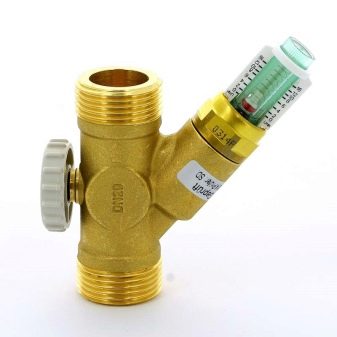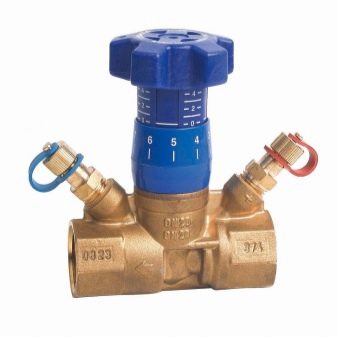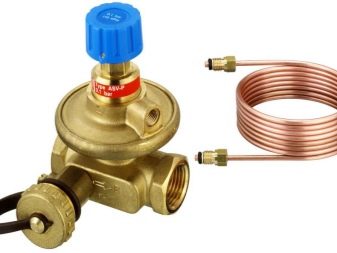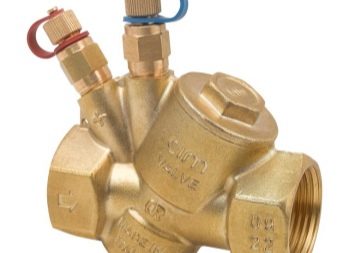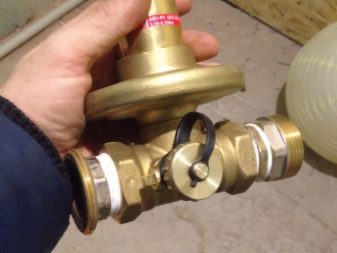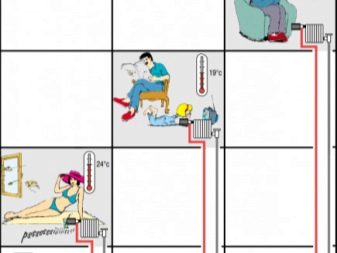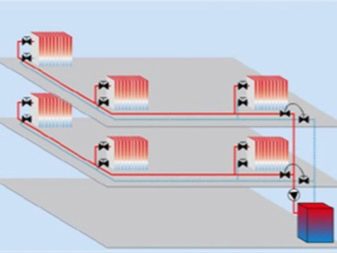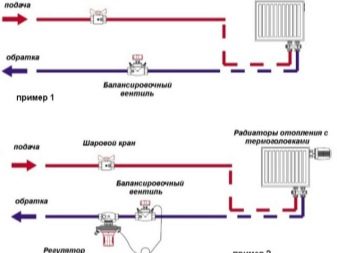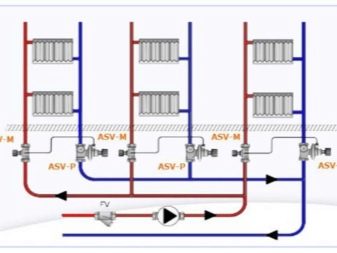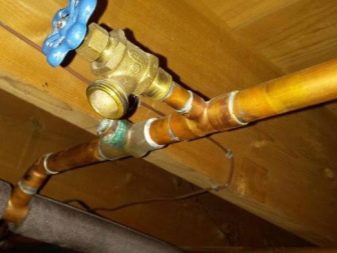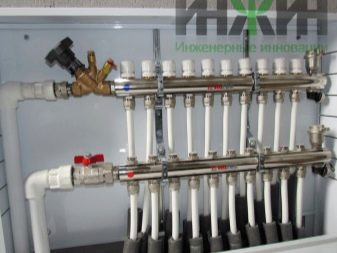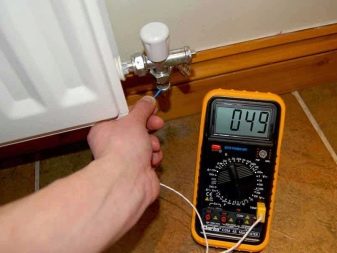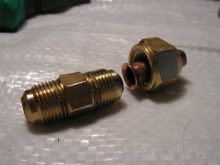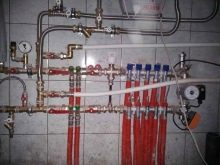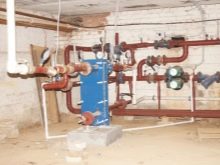Balancing valve for the heating system: what is needed and how to install it?
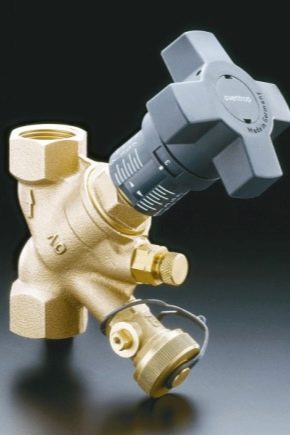
Any heating system must be properly configured. The main goal of this setup is to ensure the same performance on all parts of the network. For example, if it is a heating system of a multi-storey building, then the heat should be on the top and bottom floors. These indicators should be not only equivalent, but also close to the normative. One of the most effective ways to adjust is to use a balancing valve, the installation of which, ideally, should be considered at the stage of creating the design of the heating system.
Special features
Modern heating systems are characterized by an uneven distribution of heat in individual rooms.The amount of heat depends on the flow of coolant, and the flow of water just controls the balancing valve. If you do not use this device, the amount of heat produced will decrease, moving away from its source. Accordingly, there will be different temperatures at different points in the network.
Earlier in simpler systems, this problem was solved by installing pipes. with certain diameters or installation of special throttle washers. The latter are characterized by a certain size of passage, which ensures the supply of the required volume of water.
However, in order to achieve the required volume of coolant, it was necessary to stop the flow and disassemble the pipes. Today, a balancing valve is used to bring water to the standard.
The design is a specific valve with which the flow of coolant is regulated. Sometimes, as a supplement to this mechanism, two fittings are built in, which measure the pressure in different zones with respect to the regulating mechanism. In addition, it connects to the capillary tube to coordinate with other controls.
There are two types of valves: manual and automatic.
- The first view, as the name suggests, is controlled manually. Products are inexpensive and therefore are the most common. By changing the pressure difference and water flow, they are able to set up both individual sections and the whole system. In addition, it will be possible to monitor the indicators of the working environment at the control points, and in the event of a breakdown, disconnect any fragment and arrange repairs. Unfortunately, the adjustment of such valves is subject to a constant flow of coolant. If it changes, the system will not be able to function. Therefore, it is better to install such models in private houses and with a simplified heating system.
- Automatic valves are devices that do not require human intervention. They independently regulate the volume of spent coolant or pressure difference. Some models can work together with a pulse tube, simultaneously controlling both the flow rate and the pressure difference. It is also worth adding that very often measuring instruments are attached to the balancing valves.to make system debugging less complicated.
Automatic devices are attached to both the inlet and return pipelines. They are interconnected by a thin tube, thanks to which the valve moves and the water flow is blocked depending on pressure surges. Such a device is configured once and does not require further adjustment.
Valve models may differ depending on the coolant (steam, water or glycol solution), type of building (private house or ordinary high-rise building), installation site (supply or return pipe), working medium (at what pressure, temperature and volume of distilled water device). Finally, the valves may exhibit other properties, for example, regulate pressure and be equipped with additional devices, like an orifice plate.
Valves are usually made of brass and cast iron (as for manual models) or a combination of these materials with carbon steel in the case of automatic options. It should also be added that they can be installed on the “warm floor” and air-conditioning pipes with water supply.
Principle of operation
Balancing will have to be carried out in the following cases:
- initially at the design or installation stage of the heating system mistakes were made;
- there was a radical replacement of batteries for those that do not fit the project;
- pipeline design has changed;
- the system, due to the lack of timely cleansing, clogged.
Even one of the above situations can lead to problems with heating: oxygen-hydrogen plugs will occur, temperature deviations and excess energy required for heating. As a result, residents of apartments will be very uncomfortable to be on the premises.
Installation of the valve should begin only to understand the purpose of the device, as well as how it works. In short, the handle rotates - the size of the section changes due to the fact that the spool has blocked the flow. The cross section decreased - the hydraulic resistance increased - the flows in different pipes leveled.
If individual thermostatic valves are not installed on the radiator in the apartments of a multistory building, and the amount of heat in each room must be supplied unchanged and pre-calculated, then a manual balancing valve will be installed.This part is mounted on the return pipeline at the point where the pipe of a separate apartment is connected to the common highway, as well as ball valves.
Then the following actions are carried out: measurements are taken, and the valve is set at a certain number of turns. So, that volume of water which is necessary constantly arrives in separate "branch".
The scheme with a balancing valve is easily implemented in the case when the number of radiators does not exceed five pieces. However, if there are more, then it may well be a situation where the flow in one heating device will overlap, but increase in another. As a result: some will overheat, while others will remain not warm enough. In addition, if the room is equipped with thermostatic controls, the water flow will be changed regularly.
In this case, the automatic regulator will come to the rescue. The combination of data on pressure drops in the system and the volume of water will allow you to quickly respond and keep the system in balance.
The automatic balancing valve is adjusted using a table of pressure and flow differential, as well as a flow meter.
Installation
A balancing valve designed to control the heating system is very easy to install with your own hands. Installation is carried out as if mounted conventional ball valve. In principle, it is not particularly important how the valve itself will be placed in space, but the arrow on the body should correspond to the direction of water flow. Otherwise, the valve will begin to create resistance to the coolant. The temperature and pressure of different valves may vary, therefore, having studied the characteristics of your own heating system, it is better to find the most suitable option from manufacturers.
Before the valve it is necessary to place special protection in the form of a filter. This device allows you to avoid debris and dirt on the individual elements of the traffic controller. In addition, it is recommended to mount the valve so that there are significant straight pipe spacing before and after it. Thereby it will be possible to prevent the appearance of bends that affect the movement of water. Also before the installation of the pipe must be rinsed.
The valve installation begins after the verification of the condition of the pipes is completed - it is necessary to check their integrity and the absence of debris.Then determine the place where the device is located. The parameters of the straight sections of the pipe before and after the valve should correspond to the following figures: five diameters in front of the element and two diameters after the element or even more, this will relieve turbulence.
Then the valve is screwed into the thread of the pipe, pre-equipped with tow.
Threading on the nipple can be done with a die or other similar tool. For a quality connection to the valve to occur, the thread length must be up to seven turns.
Tips
- Adjustment can be carried out only when data on calculated indications are obtained. You can get the latest from the project documents of the thermal system. The setting is in accordance with the valve diagram and the figures obtained. Rotation of the handle sets the spindle in motion, which, in turn, makes adjustments.
- If a radiator thermostat is installed in the apartment, this means that it will constantly change the volume of coolant, depending on the slightest temperature fluctuations in the room. In this case, you immediately need to install an automatic balancing valve, the second name of which, by the way,is "dynamic."
- It is important to observe the flow direction indicated on the valve body.
- During installation, it should be ensured that no debris or unnecessary objects fall inside the pipeline. Otherwise, the device may be impaired.
- During operation of the automatic valve, you will need to consider an additional fitting for the initial filling of the circuit.
- Although all the work can be done independently, it is better to trust the professionals. A well-executed procedure will eventually save up to a third of the consumed heat energy.
- If we talk about brands that have won the trust of consumers, then the Italian Giacomini is one of the best in the world. The cost of the valve will be about 5,000 rubles. If preference is given to high-quality domestic products, then it is worth paying attention to Danfoss or Watts. In the first case, you will have to pay 2300 rubles, and in the second and even less - only 1500 rubles.
An overview of one of these balancing valves in the video below.


